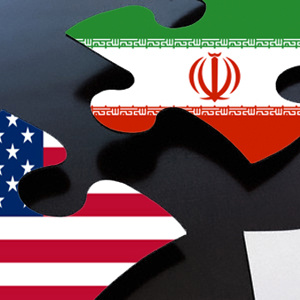Iran and Obama’s America
By Sadeq Kharrazi, Iran’s former ambassador to France.

 Within the past year, United States has followed a single strategy towards the Islamic Republic of Iran, albeit with diverse tactical faces. Before discussing U.S. global or Middle East policies, it might be helpful to spell out what the bones of contention are according to Iranians and Americans. The United States is in particular discontent with Iran’s record in non-proliferation treaty and Iran’s nuclear program, the Middle East peace process, Iran’s support for Jihadist groups in the region, human rights issues etc.
Within the past year, United States has followed a single strategy towards the Islamic Republic of Iran, albeit with diverse tactical faces. Before discussing U.S. global or Middle East policies, it might be helpful to spell out what the bones of contention are according to Iranians and Americans. The United States is in particular discontent with Iran’s record in non-proliferation treaty and Iran’s nuclear program, the Middle East peace process, Iran’s support for Jihadist groups in the region, human rights issues etc.For Iran the list includes White House’s support for Mohammad Reza Pahlavi’s dictatorship, its role in overthrow of Dr. Mosaddeq’s democratic government, freeze of Iran’s assets, unilateral sanctions, support for Iraq during the 8-year war, support for anti-revolution groups, unilateral annulment of arms contracts and refusal to pay compensation, allotting budget for regime change in Iran, shooting down Iran’s Air Flight 655 etc. The United States has been governed by nine administrations during the past thirty years. Despite their different political orientation, when it comes to Iran the national security of these administrations has relied on the unchanging doctrine which aims to isolate Iran and reduce its power of deterrence, although this policy may have changed its facade in certain situations. Containment, interaction, ‘case negotiations’ (in Afghanistan and Iraq) and containment plus case negotiations have been the four major policies followed by the U.S. diplomatic decision-making circles.
Formation of a consensual opposition against Iran and political isolation has been the grand objective of United States throughout these years. In fact, Washington’s Middle East policy is based on neutralizing Iran’s power leverage and diminishing its sphere of influence. Undermining Iran’s clout in Iraq and Afghanistan has been one of the strategic objectives of Americans, recently approached under the pretext of war against terrorism and increasing the number of American troops in Afghanistan. Expansion of the war to Pakistan and revival of the Arab-Israeli peace process have been major steps taken by Obama’s administration last year.
Obama’s rise to power and his impressive speeches which explicated Washington’s new foreign diplomacy were relatively helpful in dismissal of negative feelings towards the United States in the global public opinion. Obama talked of all-out change for the American nation and international community. Today, Washington follows a policy of consensus-building and internationalization of global issues. Obama’s vigor, and consequently his administration’s, at the global level are remarkable. The U.S. president’s eloquence has truly helped Americans reconstruct their global image.
Under Obama’s presidency, White House has decided to strengthen international organizations (such as G20), renew focus on the quality of cooperation with Beijing and Moscow and normalize ties with the Muslim World. However, towards Iran it pursues a policy of step-by-step isolation and formation of an anti-Iran alliance. Psychological warfare and promotion of a negative view towards Iran in Middle East and the Muslim World are Americans’ measures in their way to contain Iran. The duality of U.S. rhetoric and behavior reveals their long-term strategic objectives.
In fact, Americans want negotiations with a contained Iran, one that is merely as powerful as its area, not one whose ideology has pervaded the region. They want to talk to a regionally-disfavored Iran. This is where the difference between Obama’s United States and neo-conservatives’ United States becomes transparent. The new United States is pragmatist and less emotional. It follows the American tradition of policy revision.
Last year witnessed Obama’s futile efforts to break the impasse in bilateral ties by sending secret letters for Iranian leaders, releasing a message at the anniversary of occupation of the U.S. embassy, equivocal acknowledgment of Iran’s nuclear rights and a critical, yet hopeful-about-future stance towards Iran’s uranium enrichment activities.

